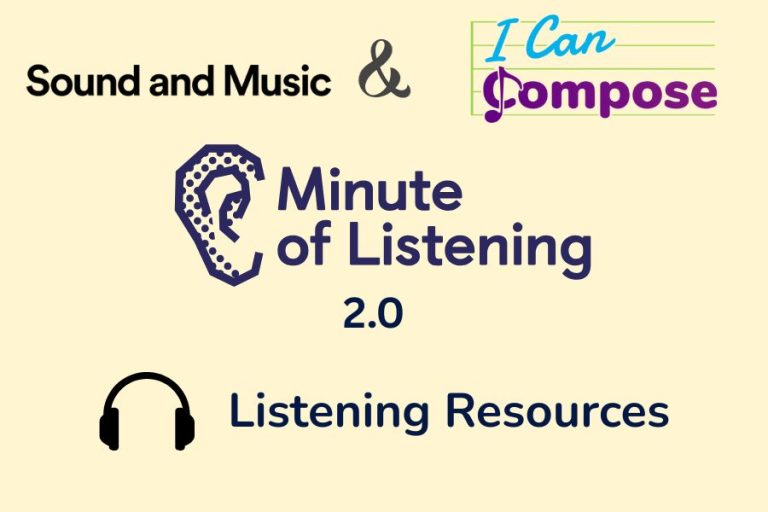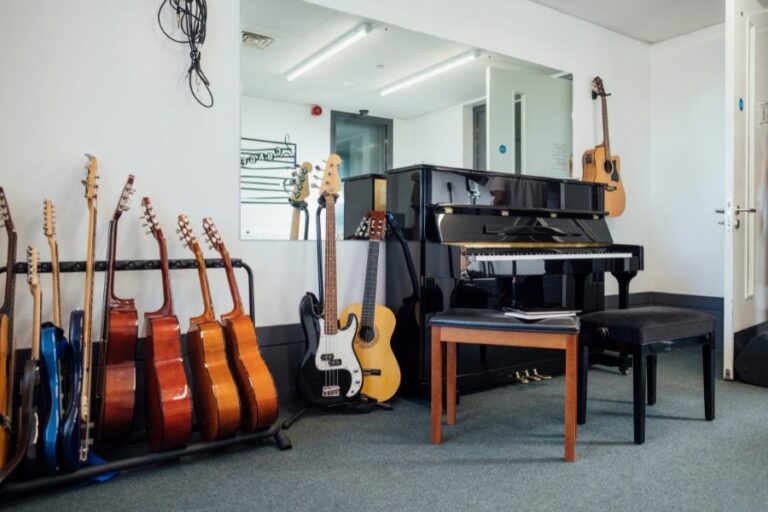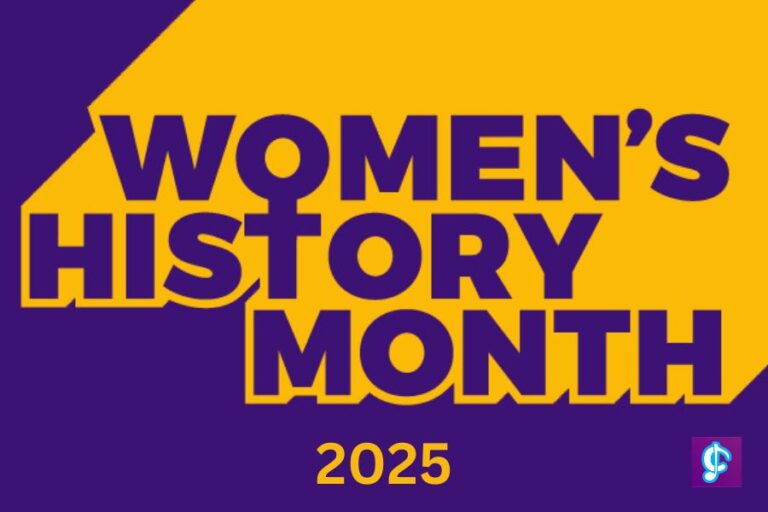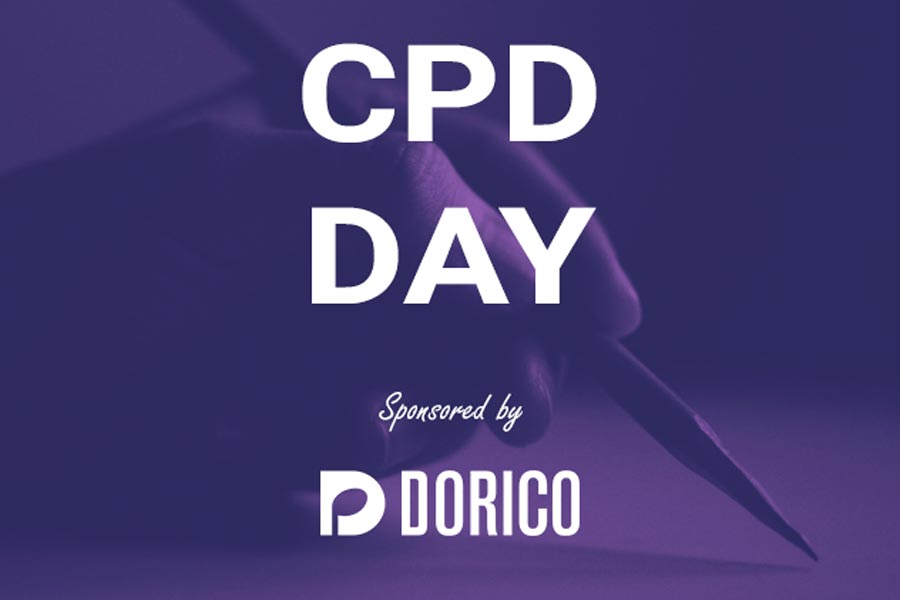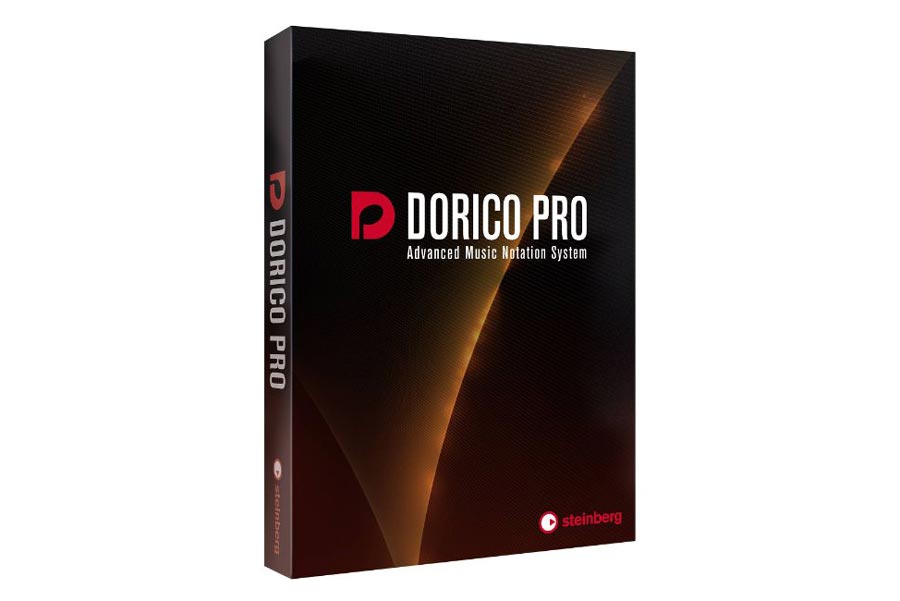It’s that time of year when most music teachers start to think about how they could make life easier in September. Having an organised, tidy classroom always sets the term off to a promising start, but also having some systems in place can save time and reduce stress. Here are 8 simple ways you can create an efficient music classroom…
1. Equipment: small items
In a busy music department, keeping track of all the equipment can be a nightmare, unless you’ve got clear systems in place. Small items are particularly prone to getting lost / pocketed so having a reliable system in place ensures that a) students know that you’re keeping tabs on the equipment and will chase it up if anything is missing, and b) you’re not wasting money replacing lost items.
These keyring headphone splitters are a lifesaver – it’s quick to see if there’s one missing and can be tracked easily due to the colour coding.
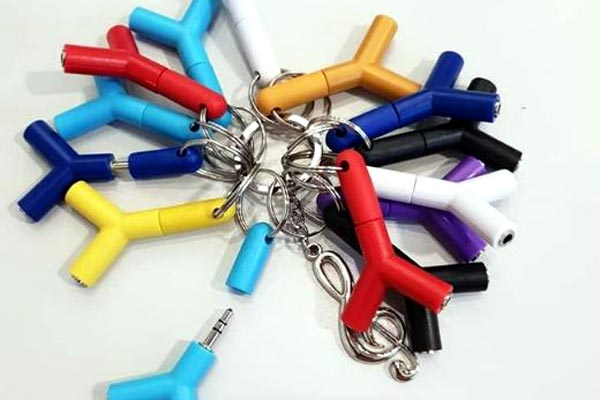
Name your equipment!
When it comes to small pieces of equipment which are handed out on an hourly basis why not get your students to name them? That way you can have a ‘register’ for the headphone splitters and if any are missing it’s much easier and more fun to track down: “Has anyone seen Brian?”….”Lola’s missing again…” (image credit: Kayleigh Griffiths)
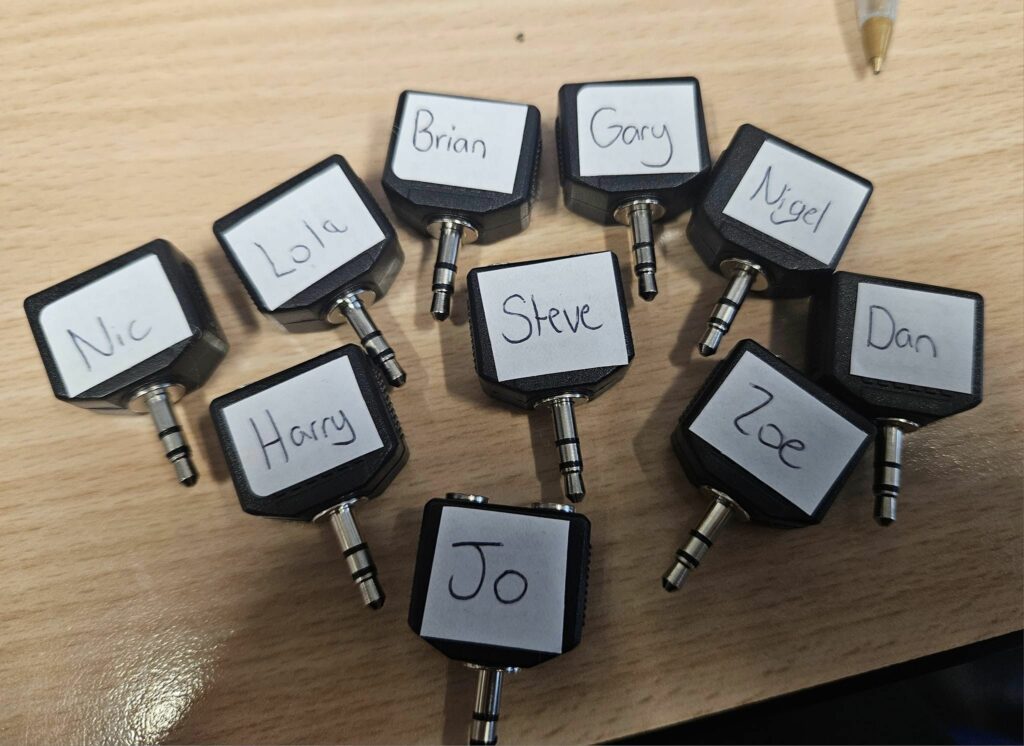
2. Equipment: plectrums
The days of buying guitar plectrums are over! Buy a handy plectrum cutter (you can get one for under £20), grab some Christmas chocolate tubs and get cutting! You could ask colleagues in the staffroom to save their chocolate tubs for you, get students to do the cutting and you’ll have an endless supply of plectrums.
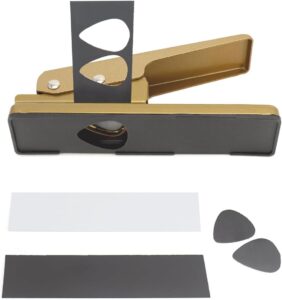
3. Storage
Music classrooms are practical spaces that house many different instruments, speakers, amps and recording equipment. You might have several classes a day all using the equipment and it needs to be tidy and ready for the next cohort. The ideal solutions should be easy for you and the students and any routines, e.g counting in headphones at the end of the lesson, should be reinforced early on in the term. Perhaps assign student monitors to be responsible for certain areas of the room to take the pressure off you and give the students ownership over the equipment. The main areas that tend to be more difficult to store are ukuleles, guitars and headphones. They can’t be stacked, put in a cupboard/drawer or on a trolley. These pictures might just give you some inspiration for your own classroom. One teacher has used a clothes rail to hang headphones from and some have made a display out of storing guitars!
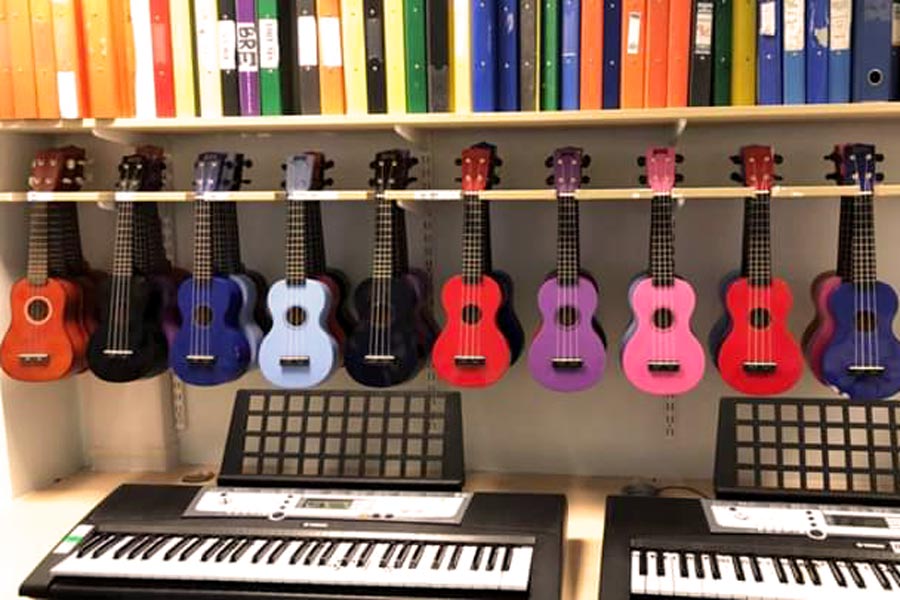
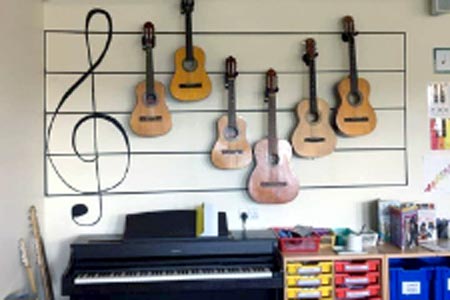
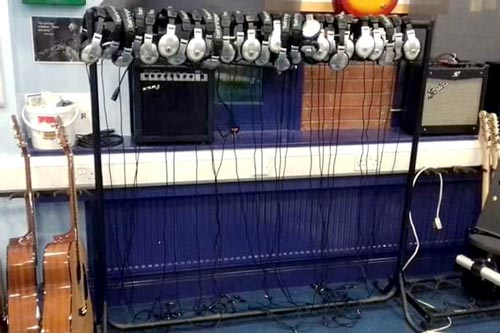
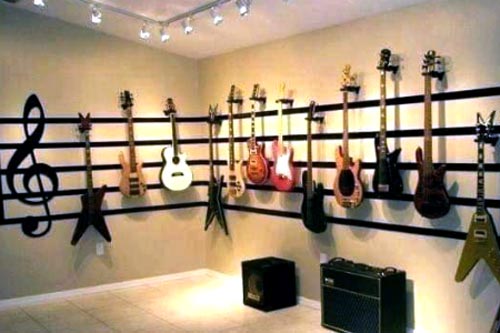
4. Display boards
What do you have on your music classroom walls? Although some teachers will quote research to say that display boards in the secondary classroom are a waste of time, most schools do insist on boards being filled, and I personally think it’s more pleasant to teach in a room with something on the walls. So if you’re going to the effort of creating displays, why not make it work to your advantage: here’s an opportunity to create a resource that pupils can use if they’re stuck and you’re busy helping another student. These ideas might get you inspired:
- Technology/keyboard help board. This can be geared towards whichever software programmes and DAWs your department use. Why not have Sibelius keyboard shortcut posters and handy how-to guides to save students time waiting for you and getting distracted.
Download FREE Sibelius, MuseScore, Noteflight, GarageBand and Dorico shortcut posters here.
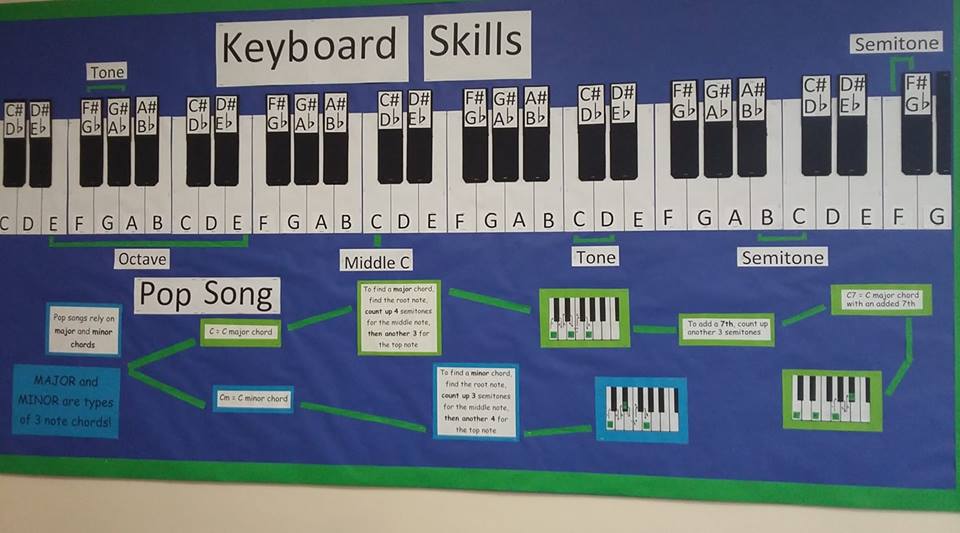
- Stretch and challenge board. Although these seem to be more geared towards maths and science classrooms, there’s no reason why music teachers can’t do something similar. You could make it practical so that when students are doing group work, there could be a pack of extra tasks to try or questions to encourage them to try new musical ideas.
- Ukulele corner. Most UK music departments teach one or two particular instruments to whole classes. These tend to be keyboards and ukuleles, but your school might teach ocarina, recorder or guitar. We used to have a ukulele corner (see right) with clear posters showing the chords and hand positions, enabling students to check their learning and to have an accessible resource if they were playing at lunchtime.
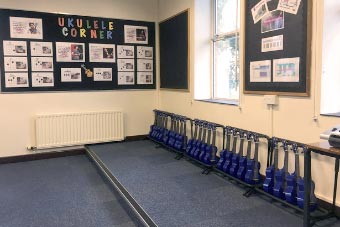
Check out this blog post: 10 Free Music Classroom Posters
5. Giving feedback
Different schools have varying policies regarding student feedback. It’s a hot topic and a whole other blog post…however for this post we’re looking at ways of making your classroom more efficient so that your life is a bit easier. To that end, I would encourage you to use Google Classroom or Showbie, an app which allows you to give meaningful feedback to your students – it’s recorded and easily accessible for parents evening, reports and SLT monitoring. It’s also compatible with Socrative and Quizlet so can integrate with other apps that you enjoy using. There’s a free version and you can also step up to the premium account to access all features.
6. Essential items kit
This idea is a bit like taking a comprehensive first aid kit with you into the jungle. Your teacher essentials toolkit will give you the confidence to face any situation in the classroom (well, almost any situation)! Here’s how it works:
You put together a box or basket of items that students (and you) need on a fairly regular basis. The aim is to prevent pupils from having to leave the room or to be unable to get on with their work. For example:
- Wet wipes (leaking pen)
- Tissues
- Spare pens and pencils
- Alcohol gel (it’s amazing how many students’ fingers have been on those keyboards…)
- Post-it notes
- Relevant school slips (lunchtime pass / detention slip / permission slip etc.)
- Guitar / ukulele paraphernalia (spare strings, picks, capo, tuner)
- Electrical spares (leads, spare piano pedal, keyboard adaptors etc.)
- Other (board pens, plasters, emergency chocolate…)
7. Playlists
Streamline the musical examples you know you’re going to use by setting up Spotify playlists for each one. For example, if you’re doing minimalism with Year 9, set up a year group playlist and share it with the relevant classes. You can do the same for GCSE and A level set works and ask students to create their own playlists for different topics. If you like to play music whilst pupils are entering the classroom, why not set up a playlist in advance so that there’s one less thing to plan and to think about.

8. Emergency work
Even if you work in a completely paperless school and have everything saved in the cloud, there might be times when you need some physical worksheets to hand. For example, if there’s a power cut / internet disconnection / unexpected room change or a student sent to exclusion. In these situations you will be grateful for a set of worksheets that students can get on with, without you needing to leave the classroom or frantically search TES for something suitable. Just keep a set in your desk drawer for peace of mind.
